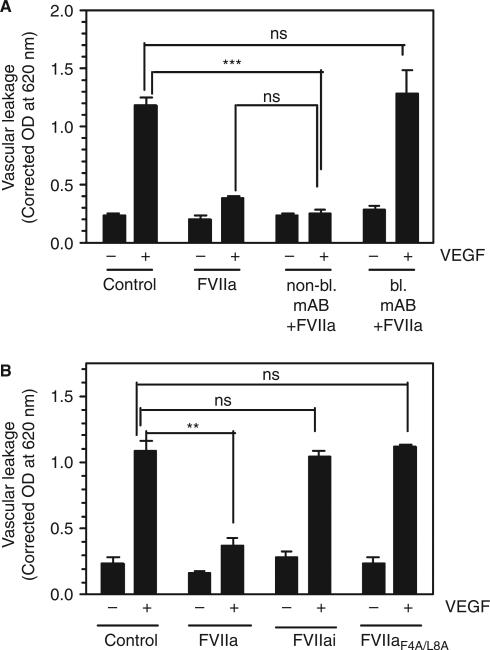Fig. 4.
Blockade of FVIIa binding to endothelial cell protein C receptor (EPCR) attenuates the FVIIa-induced barrier protective effect. (A) Wild-type mice were injected with saline, non-blocking EPCR mAb or blocking EPCR mAb intraperitoneally (4 mg kg−1 body weight) before being injected with FVIIa (120 μg kg−1 body weight) and vascular endothelial growth factor (VEGF) (six mice per group). (B) Wild-type mice were injected with saline, FVIIa, active site-inhibited FVIIa (FVIIai) or FVIIaF4A/L8A mutant (120 μg kg−1 body weight) before VEGF was injected (six mice per group). Vascular leakage in the skin was measured as described in Fig. 3. **P < 0.01; ***P < 0.001. NS, no statistically significant difference.

